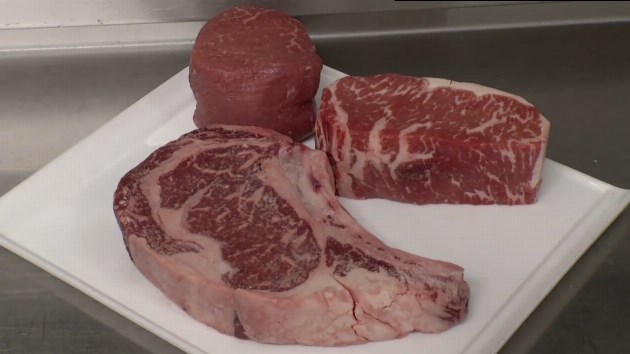ORLANDO, Fla. (AP) — Coming soon to your grocery store and dining table: steak from cattle born and raised in Florida.
Making Florida-grown beef more available is the hope of 13 cattle ranchers who have formed Florida Cattle Ranchers LLC. Among its members is Lightsey Cattle Co., which owns several ranches including one in Osceola County.
Demand for local beef inspired the ranchers to join together, said Cary Lightsey, co-owner of Lightsey Cattle. People called his ranch looking for beef products. Most were millennials, he said, or 18 to 34 year olds.
Florida-grown beef is a departure from the relatively recent practice of sending young cattle to feedlots in Western states before slaughter.
“We want it homegrown,” Lightsey said.
Consumers want food that they perceive as natural and fresh, said David Portalatin, an analyst with market researchers NPD. The trend is one of the biggest movements in the way consumers eat today.
“The word fresh specifically carries a lot of power,” he said. People in their 20s and 30s, he said, are eating and demanding fresh foods earlier in life than past generations.
Today’s consumers are still cost-conscious but are willing to consider value beyond low price, said Portalatin. They want to feed their family better — fresh, local food may be a way they perceive how to do it.
“You can charge a premium if the perceived value is there for the consumer,” he said.
To further connect with millennials and their families, Florida Cattle Ranchers is developing a special bar code for each of its products (a piece of steak, a menu item at a restaurant). The code will link customers to a video that will show where the cattle was raised, down to the ranch’s owners.
“Every producer would love to be able to showcase their own product,” Lightsey said. “It’s always been in the back of our mind, but we didn’t have the ingredients to do it before.”
Florida’s history as a beef-producing state dates to the 1500s with the arrival of Spanish explorers and their cattle. The state’s ideal climate, good soil and plentiful grass make it an optimal place for the industry.
By the 1950s and 1960s, however, it became more efficient to send cattle to Western feedlots and processing plants, said Dusty Holley with the Florida Cattlemen’s Association.
It was cheaper to ship cattle to the grain than vice versa. The dry, sometimes cooler climate out West also made it easier for cattle to fatten quickly.
Today’s high moisture corn, good genetics and quality beef make it possible to raise cattle in Florida, Lightsey said.
The Florida Cattle Ranchers’ products will have the “Fresh from Florida” designation. Members can use the brand to indicate their product is from the state — and benefit from the Florida Department of Agriculture and Consumer Services’ marketing efforts, said Aaron Keller, the agency’s press secretary.
Other Florida cattle purveyors with that designation include North Florida Natural Black Angus in Lake City, Deep Roots Meat in Greenville, the Seminole Tribe, and Buckhead Beef in Auburndale.
To be “Fresh From Florida,” the cattle must be born and raised in Florida, and fed on Florida produce. They can leave the state for up to 21 days, in this case, to be slaughtered and processed.
Ten years ago Emily Rankin, the owner of Central Florida based farm-to-restaurant distributor Local Roots, would have questioned whether the cattle were truly “farm to table” if they left the state for processing.
Rankin now sees the positives in how the cattlemen are filling gaps in infrastructure.
“There’s a version of what we want the world to be like and the version of where we are,” she said.
The infrastructure for large-scale processing that isn’t cost-prohibitive isn’t in Florida yet.
“This is the first step,” Rankin said. “The infrastructure will come as more and more people make this change and it will become more and more affordable.”
Florida Cattle Ranchers is in the market for buyers such as grocery store chains for their products. The cattle are about to start feeding in preparation for slaughter and market, a process that could take 3 to 6 months.
Each participating rancher pledged 250 cattle and an undisclosed amount of money to start, with the option of pledging more later. There will also be a “B Class” membership for other ranchers to join the business venture in the future.
The cattlemen are optimistic about their new venture, Lightsey said.
“We hope this thing will be around 100 years from now.”
Copyright 2024 The Associated Press. All rights reserved. This material may not be published, broadcast, rewritten or redistributed.

